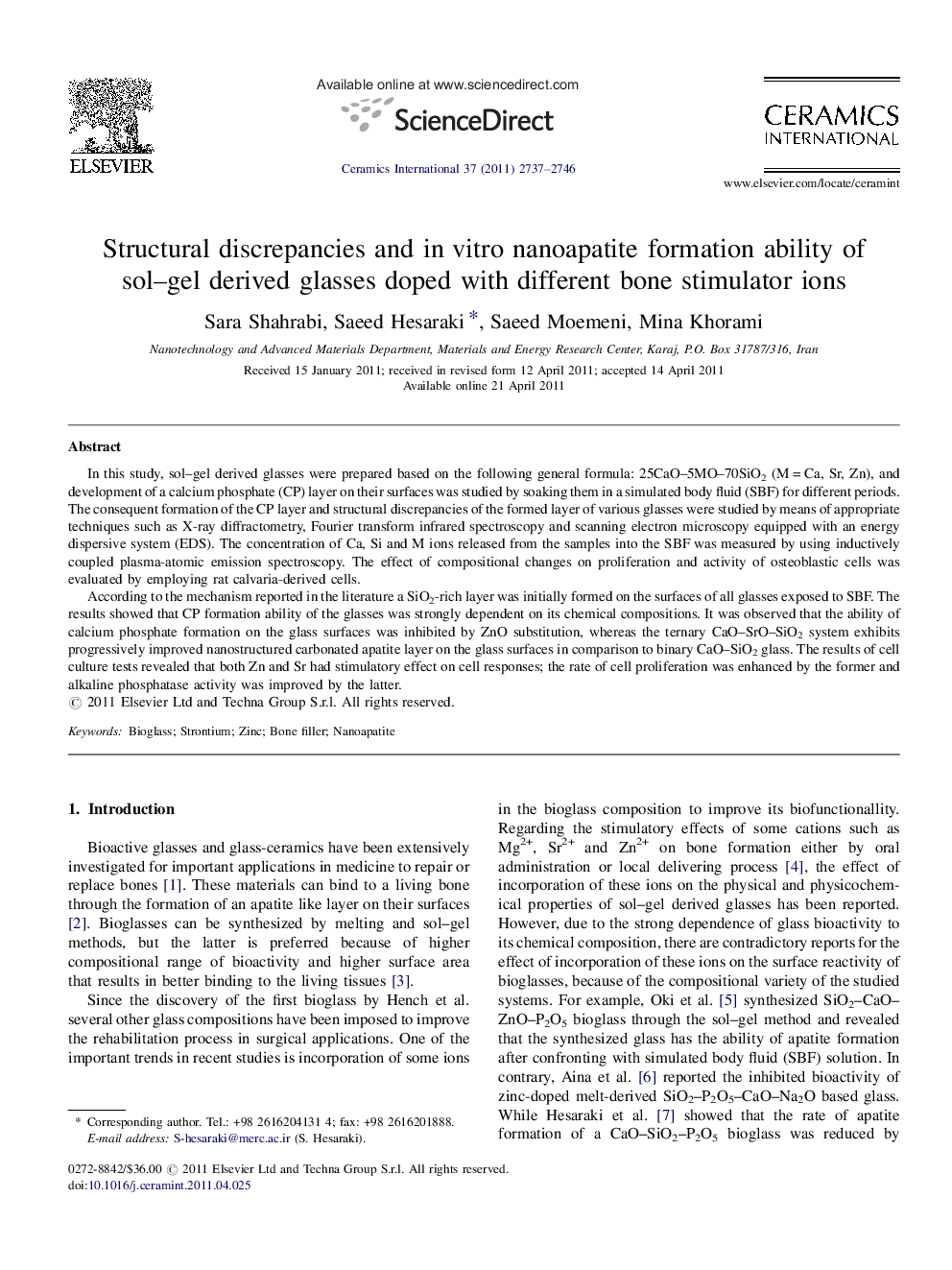| Article ID | Journal | Published Year | Pages | File Type |
|---|---|---|---|---|
| 1463265 | Ceramics International | 2011 | 10 Pages |
In this study, sol–gel derived glasses were prepared based on the following general formula: 25CaO–5MO–70SiO2 (M = Ca, Sr, Zn), and development of a calcium phosphate (CP) layer on their surfaces was studied by soaking them in a simulated body fluid (SBF) for different periods. The consequent formation of the CP layer and structural discrepancies of the formed layer of various glasses were studied by means of appropriate techniques such as X-ray diffractometry, Fourier transform infrared spectroscopy and scanning electron microscopy equipped with an energy dispersive system (EDS). The concentration of Ca, Si and M ions released from the samples into the SBF was measured by using inductively coupled plasma-atomic emission spectroscopy. The effect of compositional changes on proliferation and activity of osteoblastic cells was evaluated by employing rat calvaria-derived cells.According to the mechanism reported in the literature a SiO2-rich layer was initially formed on the surfaces of all glasses exposed to SBF. The results showed that CP formation ability of the glasses was strongly dependent on its chemical compositions. It was observed that the ability of calcium phosphate formation on the glass surfaces was inhibited by ZnO substitution, whereas the ternary CaO–SrO–SiO2 system exhibits progressively improved nanostructured carbonated apatite layer on the glass surfaces in comparison to binary CaO–SiO2 glass. The results of cell culture tests revealed that both Zn and Sr had stimulatory effect on cell responses; the rate of cell proliferation was enhanced by the former and alkaline phosphatase activity was improved by the latter.
